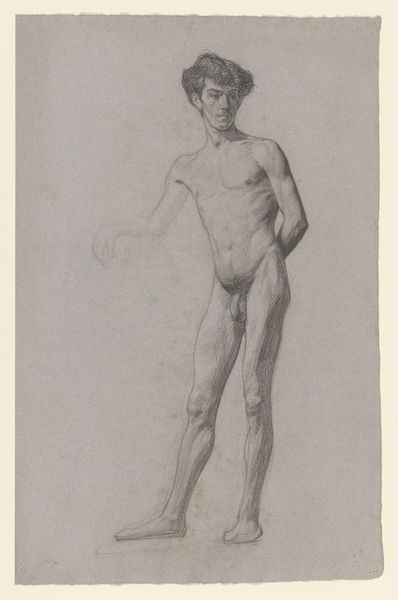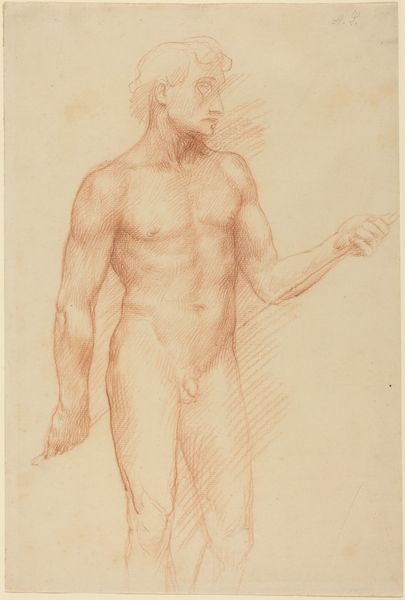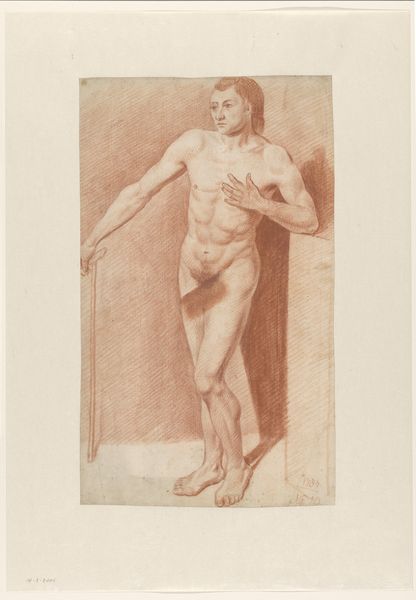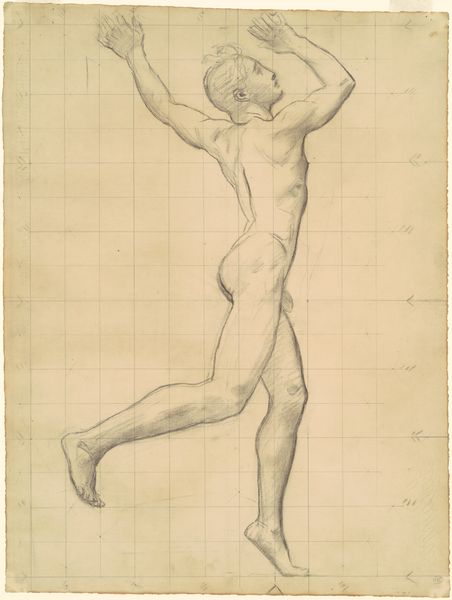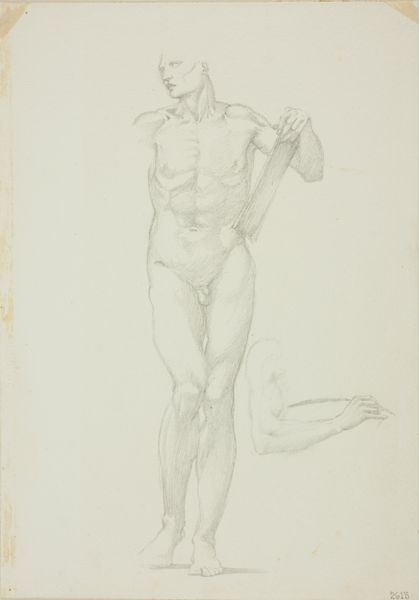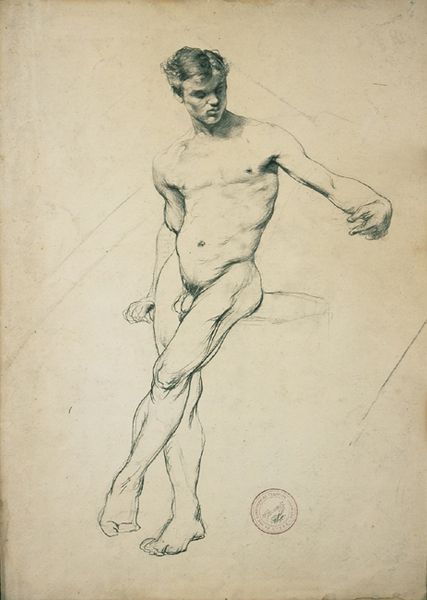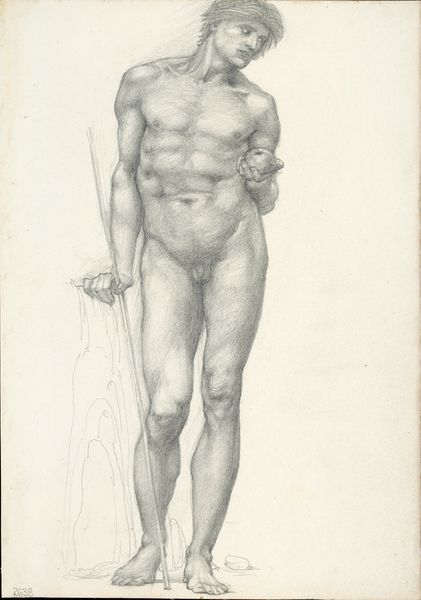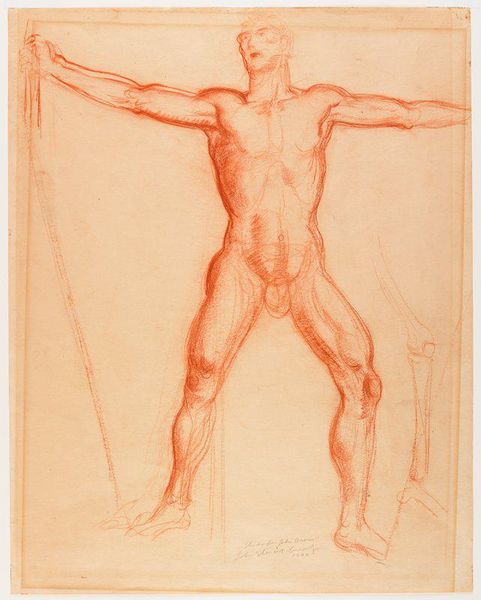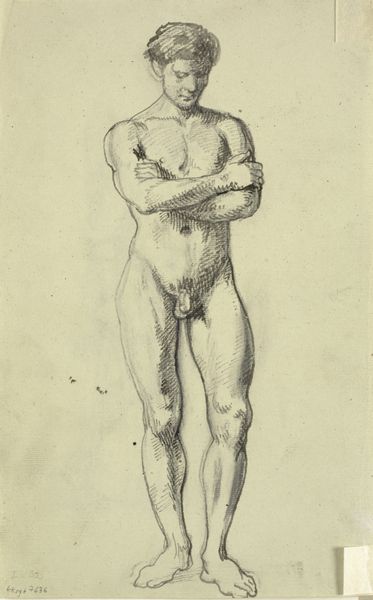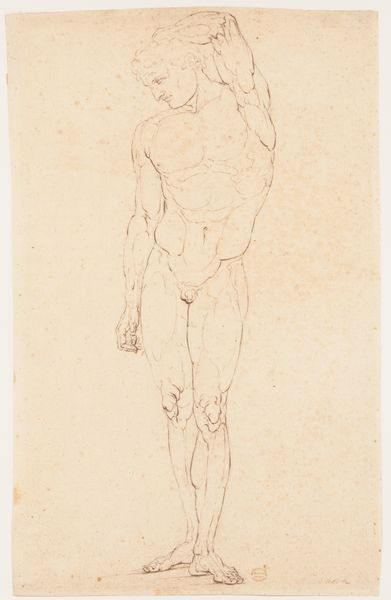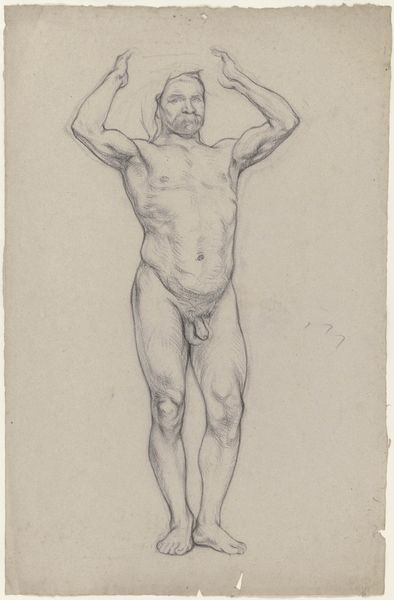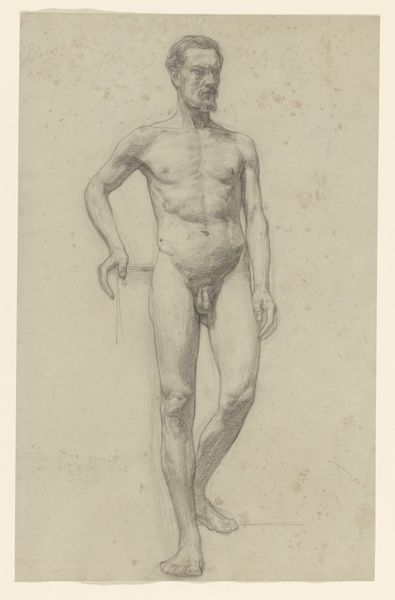
drawing, pencil
#
portrait
#
pencil drawn
#
drawing
#
pencil sketch
#
figuration
#
pencil drawing
#
pencil
#
portrait drawing
#
academic-art
#
nude
Dimensions: sheet: 63.18 × 48.1 cm (24 7/8 × 18 15/16 in.)
Copyright: National Gallery of Art: CC0 1.0
Curator: Isn't that interesting, the artist really seems to have worked those leg muscles... But, well, let's dive in. We're looking at John Singer Sargent's "Study of Orpheus for 'Classic and Romantic Art'," a pencil drawing from around 1921. Editor: Orpheus... it’s interesting that he's portrayed in a moment of intense expression, almost anguish, despite being just a sketch. There is a sense of urgency and desperation coming from him. You almost want to fill in the emotion to understand what exactly happened. Curator: Right, Sargent was doing studies for a mural commission, you see. So, the Orpheus here is about conveying feeling, almost raw emotive force, not some passive ideal figure. Sargent, the portraitist of elegance and leisure, really puts this figure to hard work. What kind of tradition is he pulling from here? I wonder if it speaks to something of his own attitude toward commissions late in his career. Editor: The mural commission really provides the historical context to the picture here, which seems so loose. Sargent worked a lot in those established channels. Considering the grand narrative ambitions inherent to the genre and style, I see an exercise of translation here, bridging a storied classical subject and a modernist sensibility. This drawing really focuses our attention on the raw physicality, a quality not traditionally associated with mythological figures. Curator: Exactly. He’s really wrestling with the subject in his technique and his vision. Those bold strokes and anatomical explorations aren’t simply academic exercise. Editor: Indeed. The medium underscores its nature as a study; pencil isn't about the grand statements like the historical painting but that moment of active engagement. Curator: Well, looking closely makes me reflect on how even preparatory studies can communicate feeling and the inner, working doubts that an artist expresses in an interesting stage of their career. Editor: And, seeing the artist use modern approaches and media adds another layer of interpreting a historical figure like Orpheus, adding dimension and complexity to understanding the legacy.
Comments
No comments
Be the first to comment and join the conversation on the ultimate creative platform.
